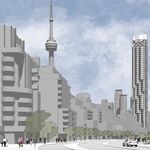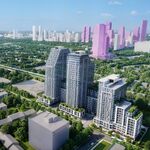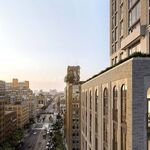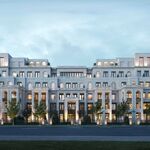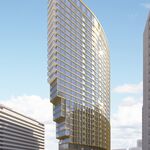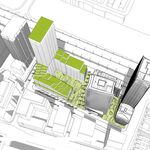Over the last week, UrbanToronto has taken an in-depth look at the Crosstown LRT designs that emerged from the recent Metrolinx and Crosslinx Transit Solutions presentation at the Design Review Panel (DRP). On October 2nd, we explored the station and platform designs put forward for the 19-kilometre line's underground section, and the next day we previewed the LRT's planned outdoor components, including the ambitious green trackway.
Continuing our coverage of the newly unveiled designs, we now bring you a close look at the Mount Dennis Crosstown Station and Maintenance and Storage Facility (EMSF), located at the line's western terminus, where extensive landscaping, natural beautification, and architectural restoration is planned for the site.
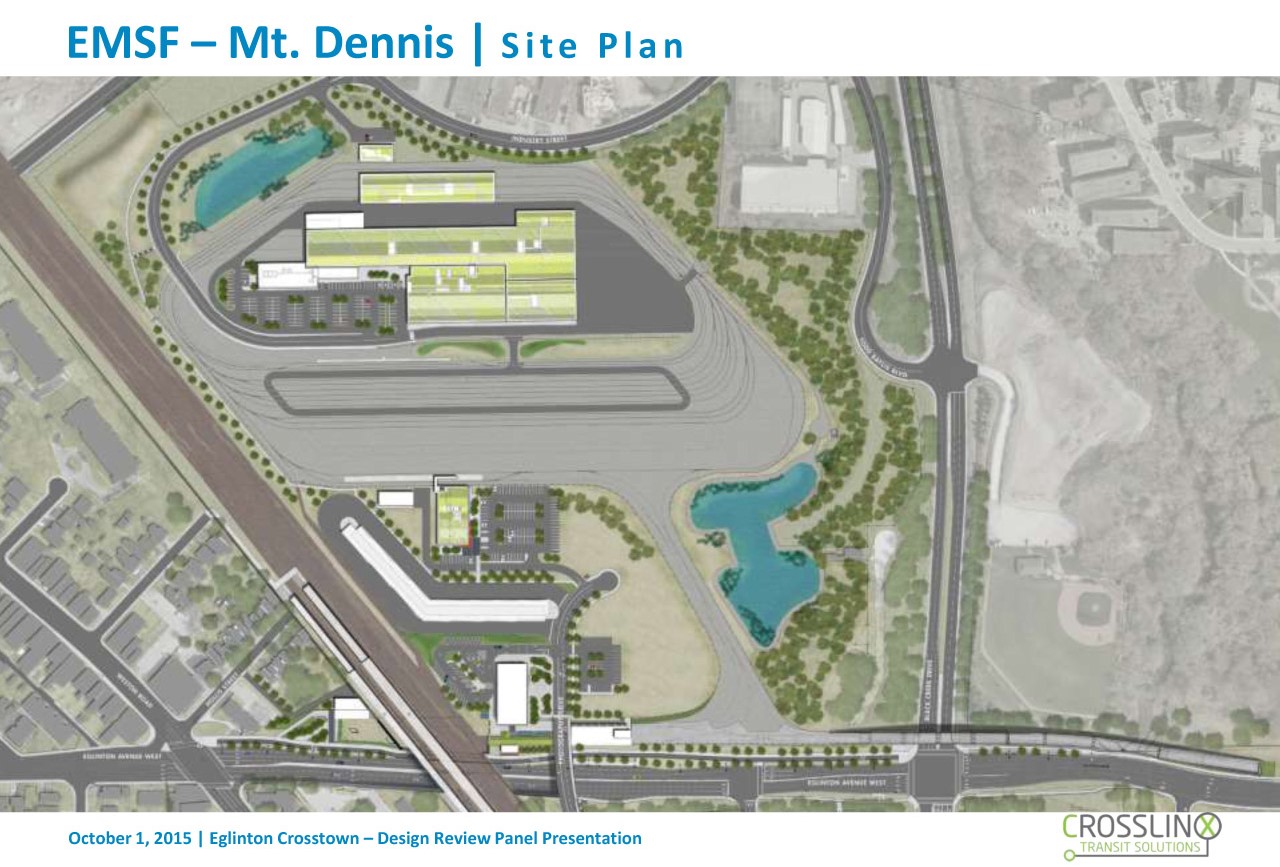 The site plan for the Mt. Dennis Station and EMSF, image courtesy of Metrolinx
The site plan for the Mt. Dennis Station and EMSF, image courtesy of Metrolinx
Much of the Mount Dennis Crosstown station will be located on the former Kodak lands on Eglinton Avenue just east of Weston Road. The area, known as "Kodak Heights," was once the headquarters of Eastman Kodak's Canadian operations, housing photo processing and manufacture facilities, as well as administrative offices.
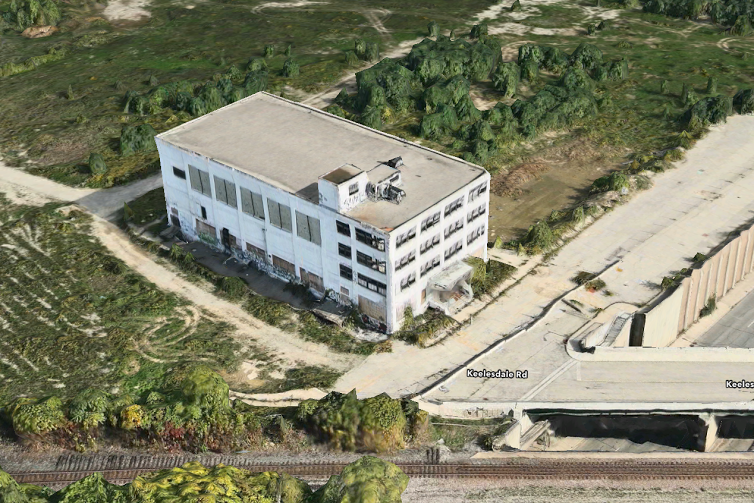 The remaining Kodak building will be part of the new station, image sourced from Apple maps
The remaining Kodak building will be part of the new station, image sourced from Apple maps
Though the Kodak campus contained a dozen buildings—employing some 900 people—during its early-to-mid 20th century heyday, only Building 9 (above) still remains. The property will be thoroughly renovated, serving as a secondary entrance to the station, with new administrative space also made available above (below).
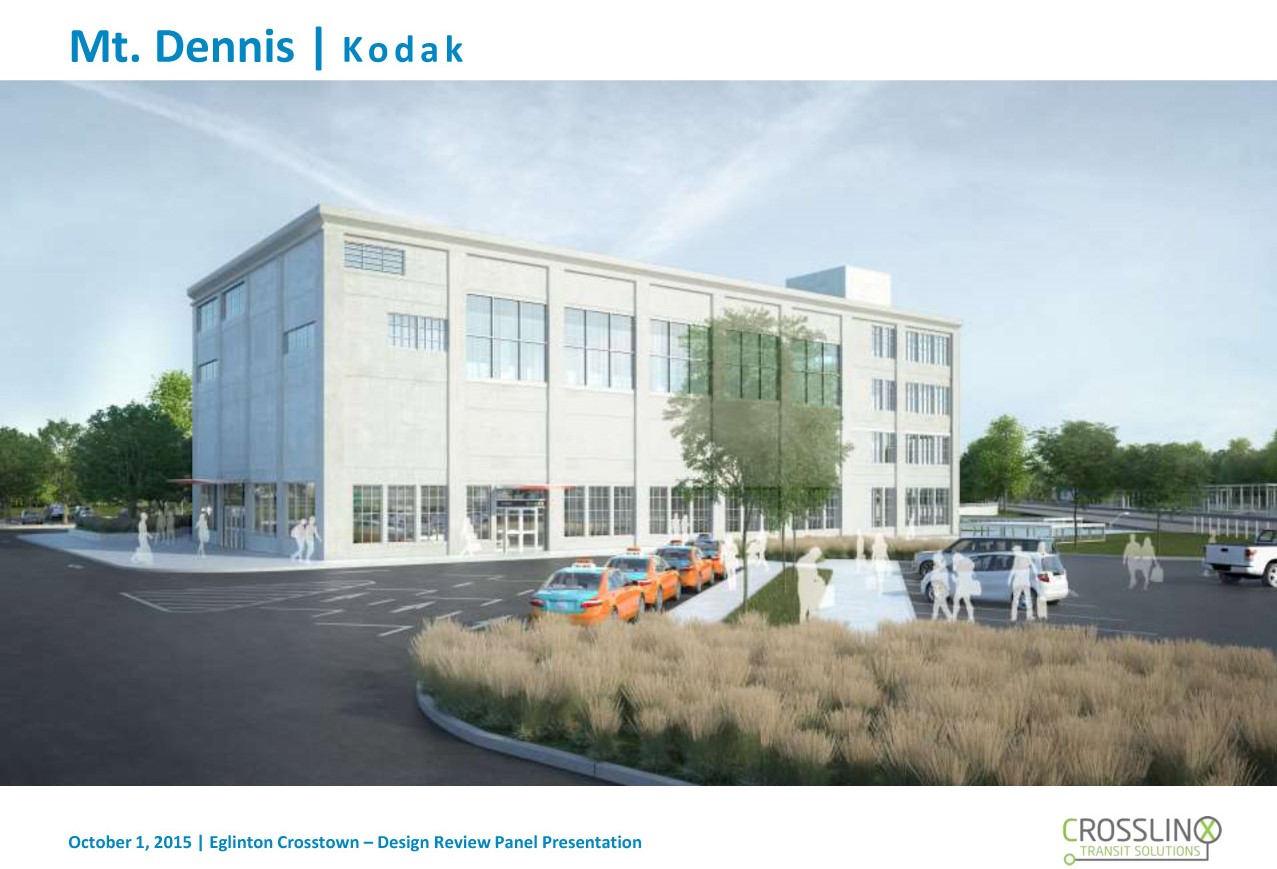 The renovated Kodak building, image courtesy of Metrolinx
The renovated Kodak building, image courtesy of Metrolinx
The main entrance, meanwhile, will be located directly west of the railway bridge, facing directly onto Eglinton Avenue, with extensive indoor and outdoor bicycle parking provided at the entrance. As seen in the rendering (below), new landscaping and street furniture will create a small public plaza in front of the entrance.
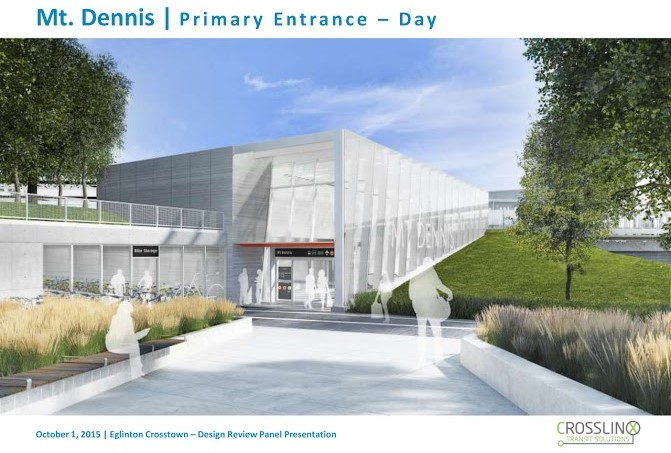 The main entrance of Mt. Dennis Station, image courtesy of Metrolinx
The main entrance of Mt. Dennis Station, image courtesy of Metrolinx
Just to the north, a 15 bay outdoor bus terminal will adjoin the secondary entrance (below), providing a range of TTC connections to the LRT, with a number of existing bus routes set to be adjusted to meet the upcoming station. In addition, Mount Dennis Station will be directly connected to a new stop on GO Transit's Kitchener Line, while drop-off areas will facilitate easier transit access for automobile users.
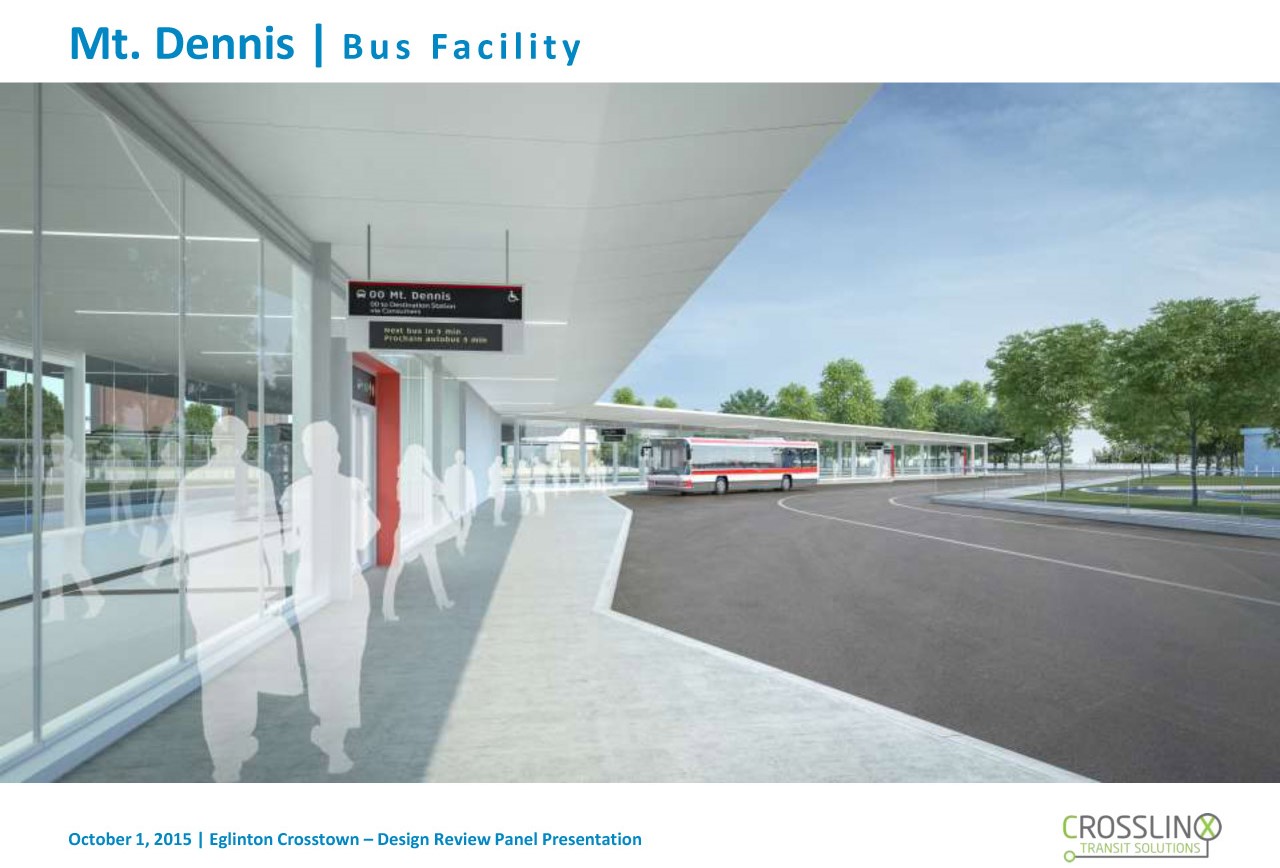 The bus bay, image courtesy of Metrolinx
The bus bay, image courtesy of Metrolinx
The EMSF, which will stable LRT trains when they are not in use, will be located north of the bus terminal. The facility will also provide servicing and repairs the system's rolling stock. Although the building's purpose will be mechanical and quasi-industrial, care has been taken to minimize its impact on the surrounding area, much of which is dominated by greenery and park space.
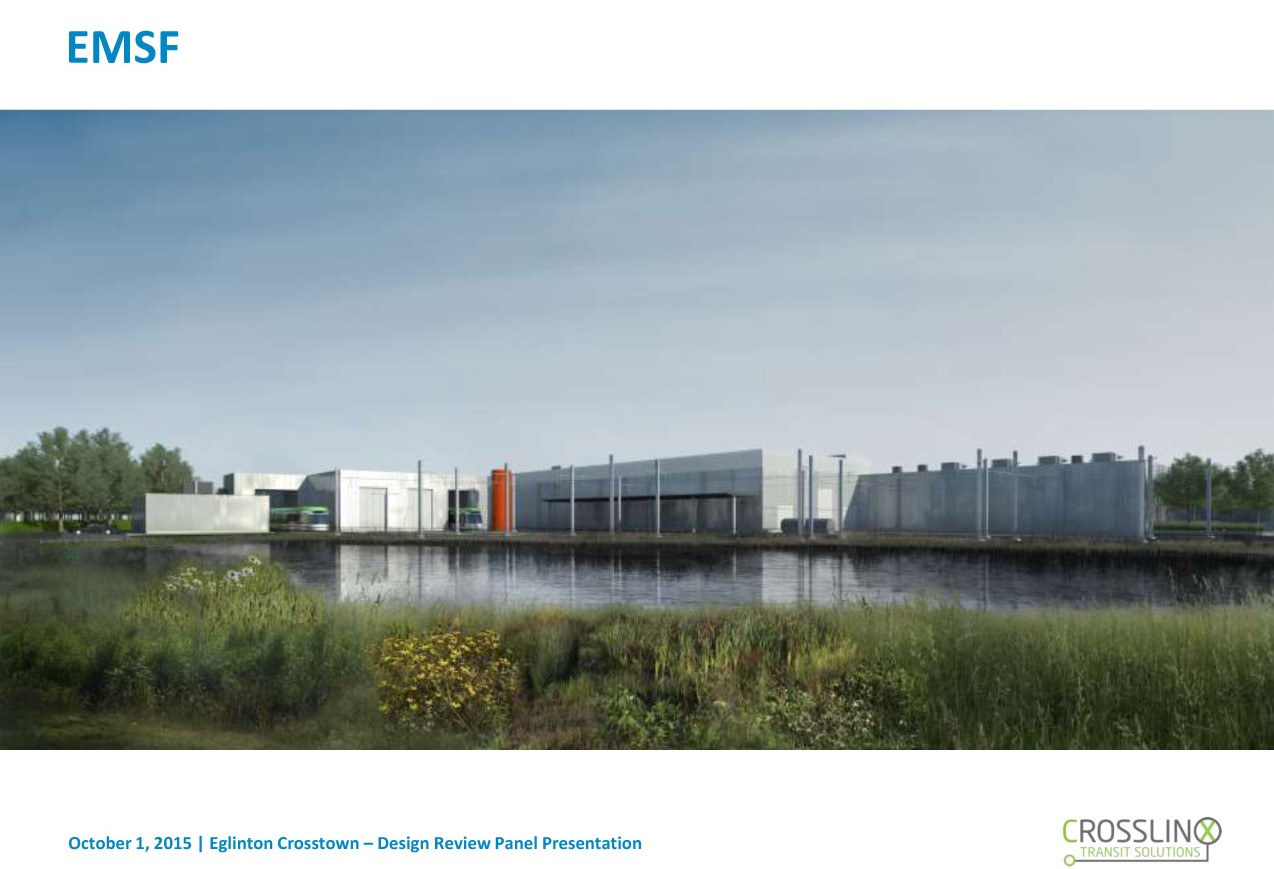 A rendering of the EMSF, image courtesy of Metrolinx
A rendering of the EMSF, image courtesy of Metrolinx
Featuring two new artificial ponds and extensive new plantings (seen in the first renderings), as well as a green roof—a feature shared by the station entrances—the EMSF's aesthetic impact on the landscape will be minimal. As it stands, the former Kodak lands on which the facility will be located currently remain relatively barren, with the outlines of disused industrial access roads still visible from above.
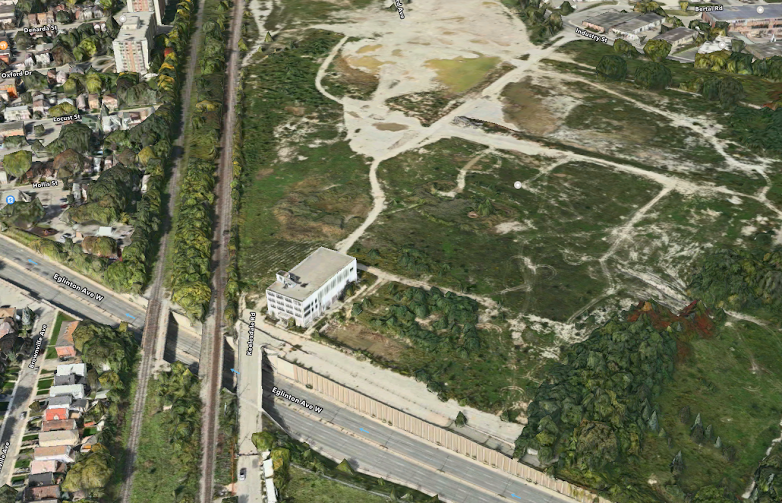 The Kodak Lands seen from above, image sourced from Apple maps
The Kodak Lands seen from above, image sourced from Apple maps
The facility's new landscaping will help incorporate the former Kodak lands back into the urban sphere, making the lands more cohesive with the surrounding green spaces. By the time the first trains leave the station in 2021 (below), the LRT facilities will significantly reshape both the streetscape and the surrounding area.
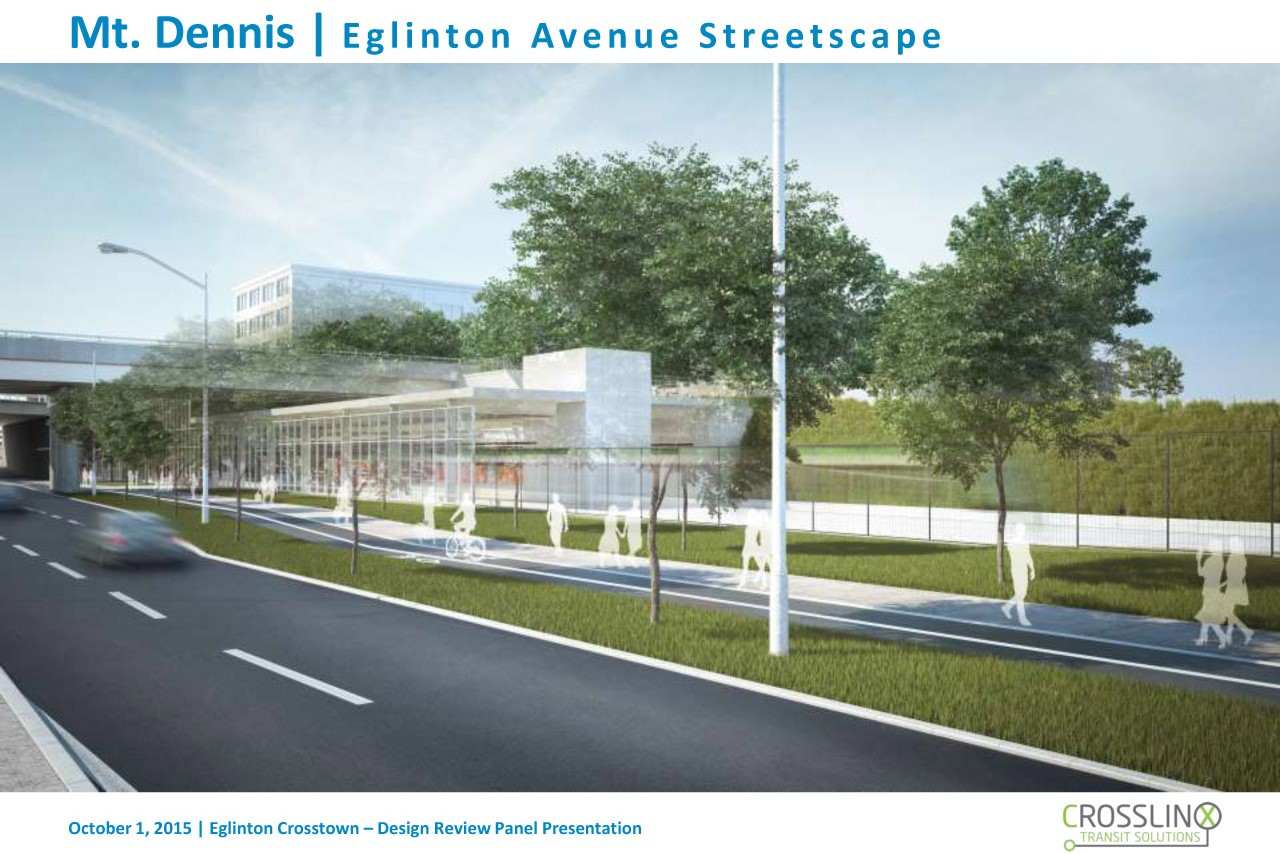 Looking west on Eglinton Avenue, image courtesy of Metrolinx
Looking west on Eglinton Avenue, image courtesy of Metrolinx
We will keep you updated as the Crosstown's finer details continues to emerge, and we will return later in the week with new information regarding the feasibility of high-rise development above the system's underground stations. In the meantime, check out dataBase files, linked below, for more information and additional renderings. Want to share your thoughts on the designs? Feel free to leave a comment at the bottom of the page, or join in the discussions in one of our Forums, linked below.
| Related Companies: | Arcadis, Doka Canada Ltd./Ltee, LiveRoof Ontario Inc |

 3.9K
3.9K 






















